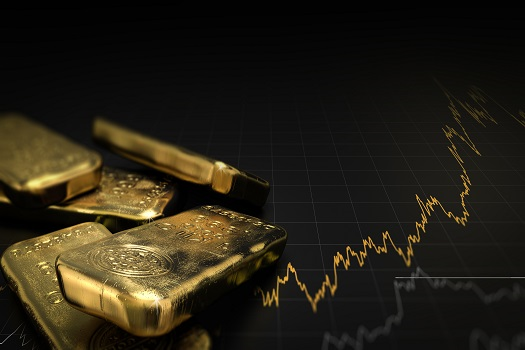What Makes the Price of Gold Fluctuate?
Gold differs from commodities such as coffee and platinum. Nearly all the gold mined is still around. People don’t consume it, and industry uses it in small amounts. Demand has a role in its price, but investor behavior and supply play big parts as well. Even if they prefer to buy platinum coins or silver bullion, San Diego precious metals collectors might be interested in the following facts explaining why the value of gold changes.
Supply & Demand
The supply of gold should drop over time as more of it is mined. In 2001, the price of gold was almost at its lowest price ever. Approximately 3,009 tons of gold were used in jewelry, 363 tons were used in technology, and 357 tons were used for investments. By 2017, 371.4 tons of gold were used for investments, 1,029.2 tons were made into coins and bars, 332.8 tons were used in technology, and 2,135.5 tons were used in jewelry. You would think this low level of overall demand would keep the price of gold dropping, but the high demand for jewelry keeps it stable. The thing about jewelry is that it gets put away and stays off the market for years at a time.
Investor Confidence
Gold changes value often because it’s protected from a volatile market. India is one of the top consumers of gold. In Indian culture, people prefer physical assets. They view gold as a protector against uncertainty. For the average investor, gold is a safe bet when other assets fall. Cultures such as India buy gold for adornment as well. Some buyers hold on to it for a long time or never sell. Whether the economy is good or bad, investors view gold as safe.
Banks
In the market, central banks are big sellers of gold. The issue with central banks is that they don’t want gold, and they sell it to get rid of it. It can’t create any return for them. Banks are constantly selling gold when buyers aren’t interested, which lowers the price. Banks cannot sell more than 400 metric tons per year. This isn’t a legal limit—it’s more of a gentlemen’s agreement. Exchange-traded funds allow investors and companies to buy gold without buying mining stocks. Now these companies, such as iShares and Gold Trust, are major players in buying and selling gold. These companies allow bullion shares, and their holdings are measured in ounces of gold.
Consistent Value Over Time
One good thing about gold is how it holds its value better than most other commodities. About 2,000 years ago, a Roman soldier was paid with 2.31 ounces of gold per year, and a centurion or captain was paid with 35.58 ounces of gold. If that form of payment was still used in 2011, a US Army private would have been paid about 11 ounces of gold, and a captain would have earned 27.84 ounces of gold. In this example, gold’s value changed .08 percent and -.02 percent, respectively, over two millennia.
When they’re looking to buy gold, San Diego residents should work with trustworthy precious metal dealers who offer high-quality service and have years of experience. Call on the industry-leading professionals at First National Bullion when you’re ready to invest in gold bullion, coins, or bars. Give us a call today at 858-666-6570.
The statements made in this blog are opinions, and past performance is not indicative of future returns. Precious metals, like all investments, carry risk. Precious metals and coins may appreciate, depreciate, or stay the same in cash value depending on a variety of factors. First National Bullion does not guarantee, and its website and employees make no representation, that any metals for sale will appreciate sufficiently to earn the customers a profit. The decision to buy, sell, or borrow precious metals and which precious metals to purchase, borrow, or sell are made at the customer’s sole discretion.


